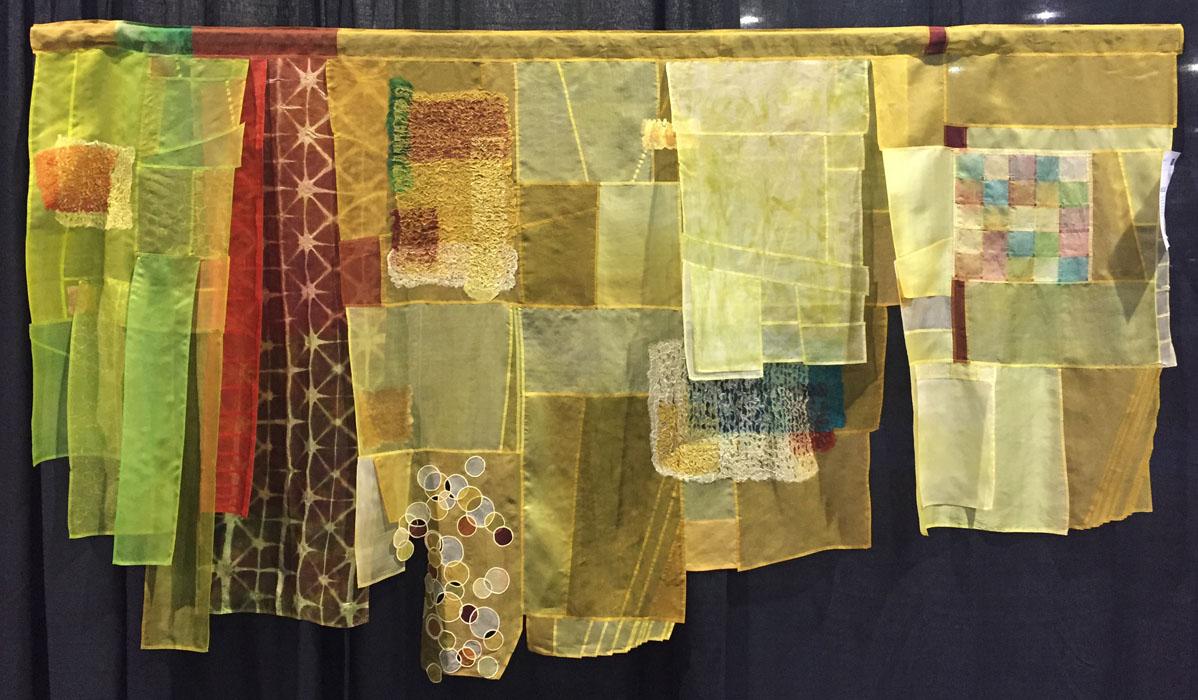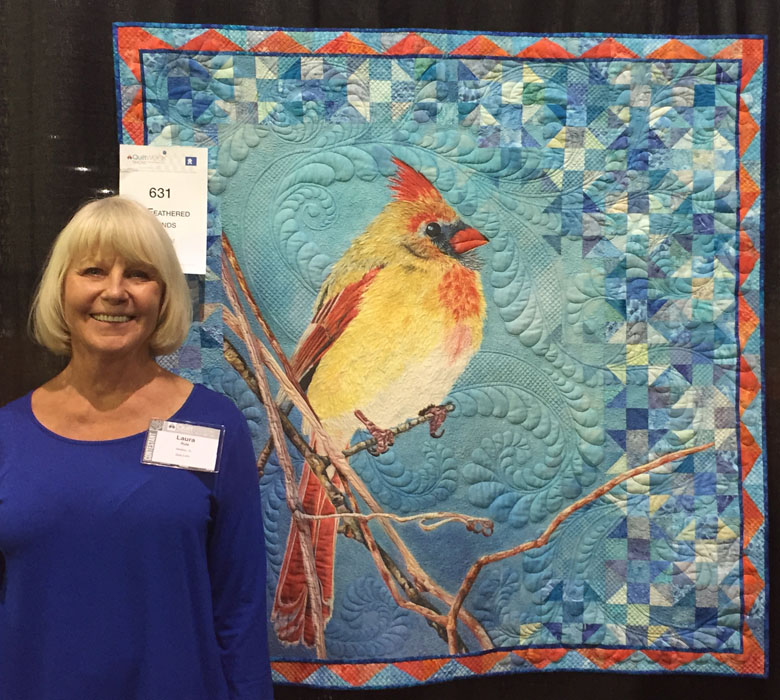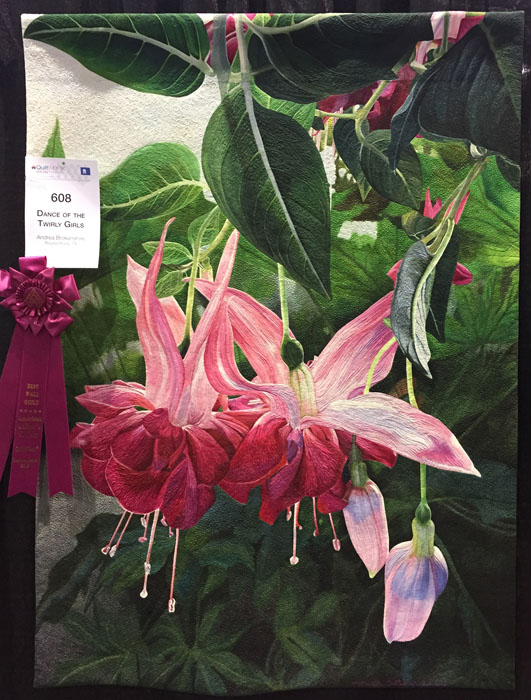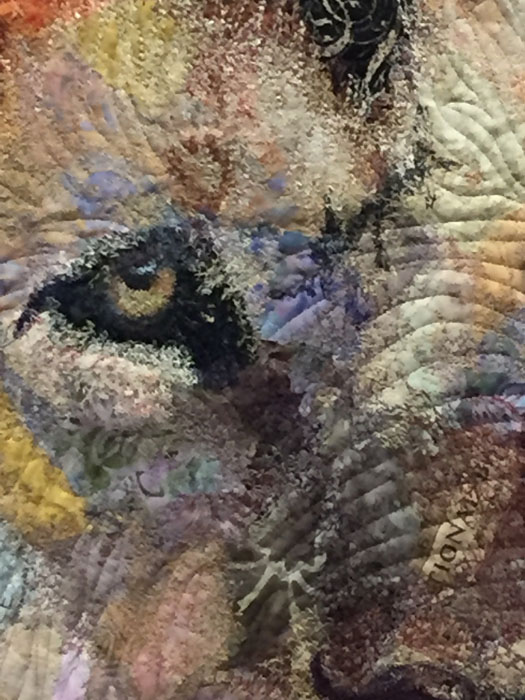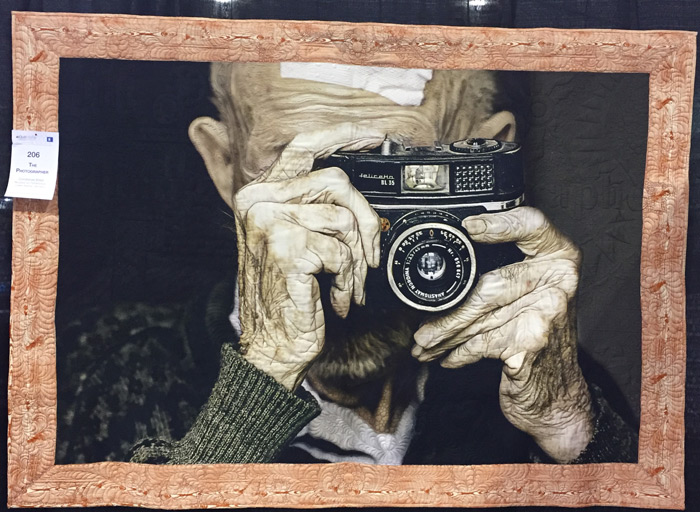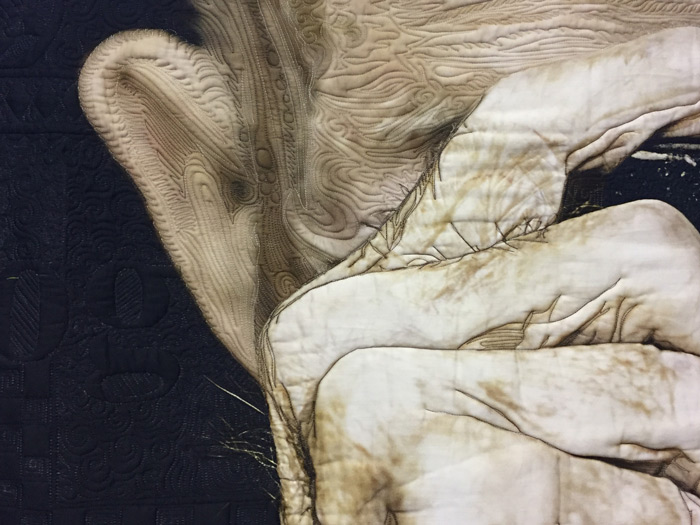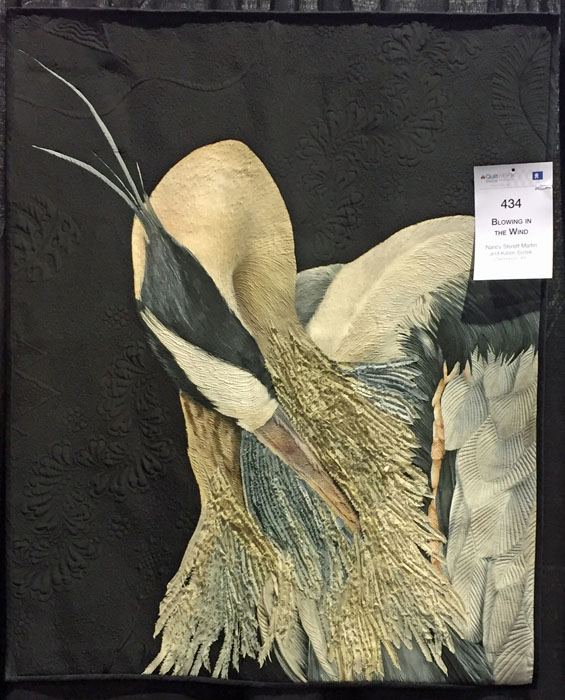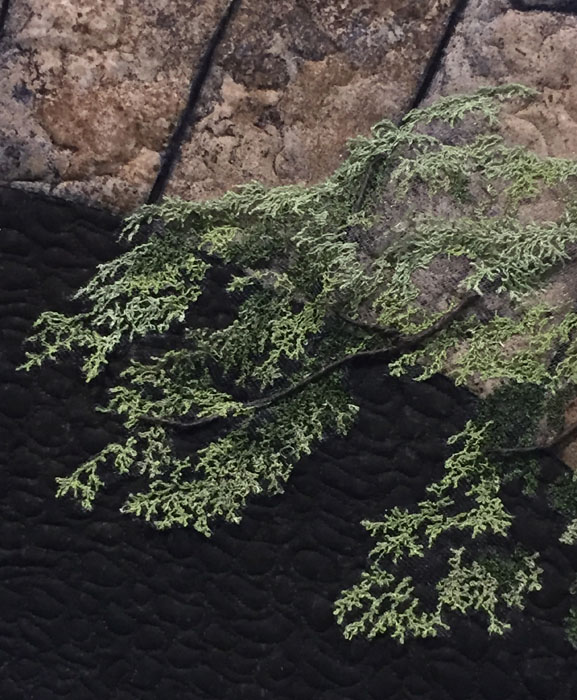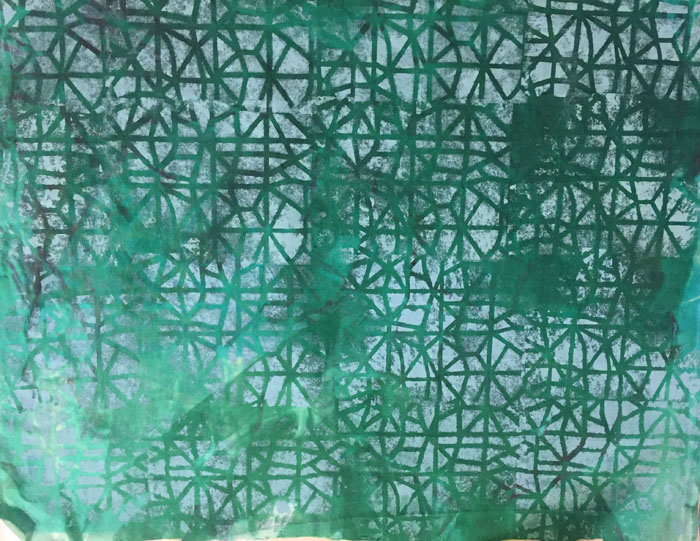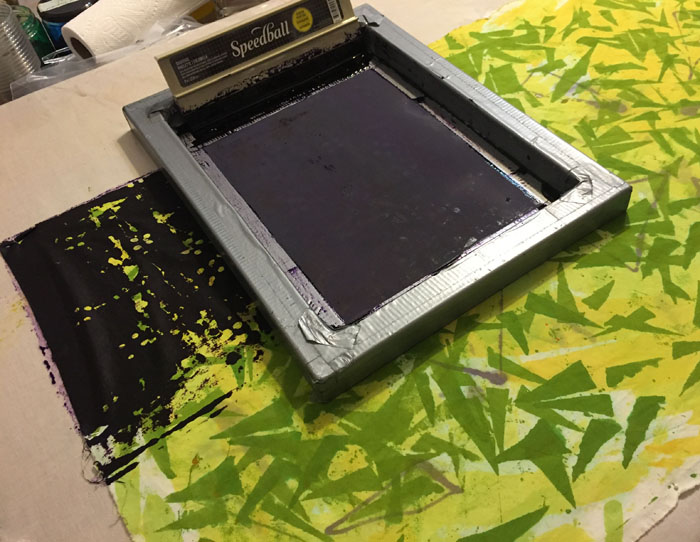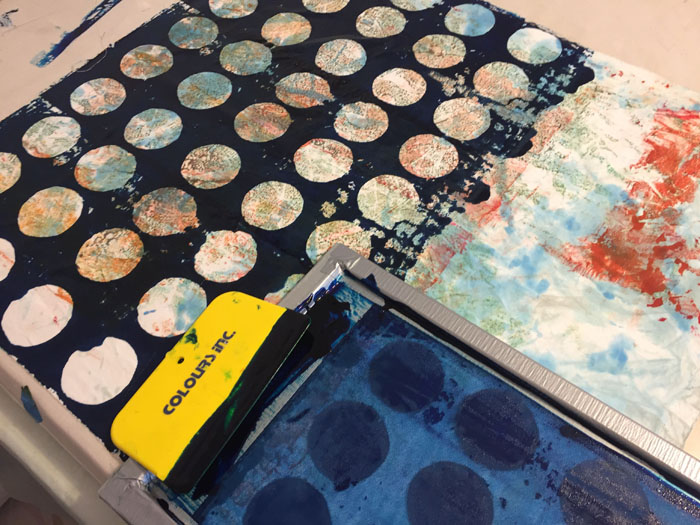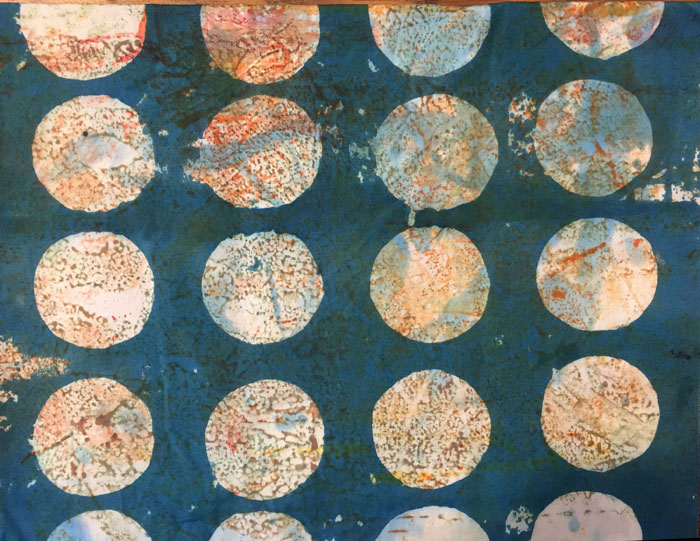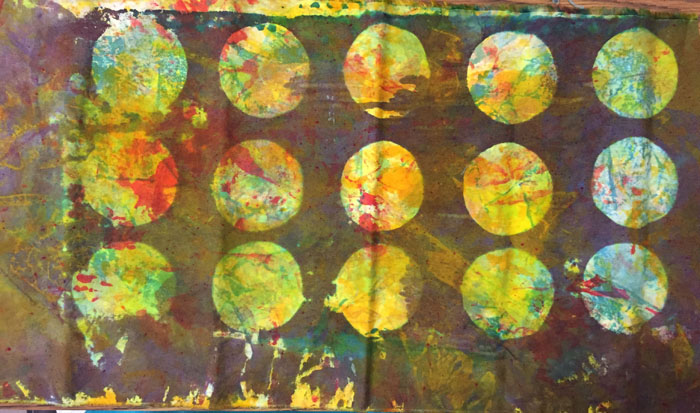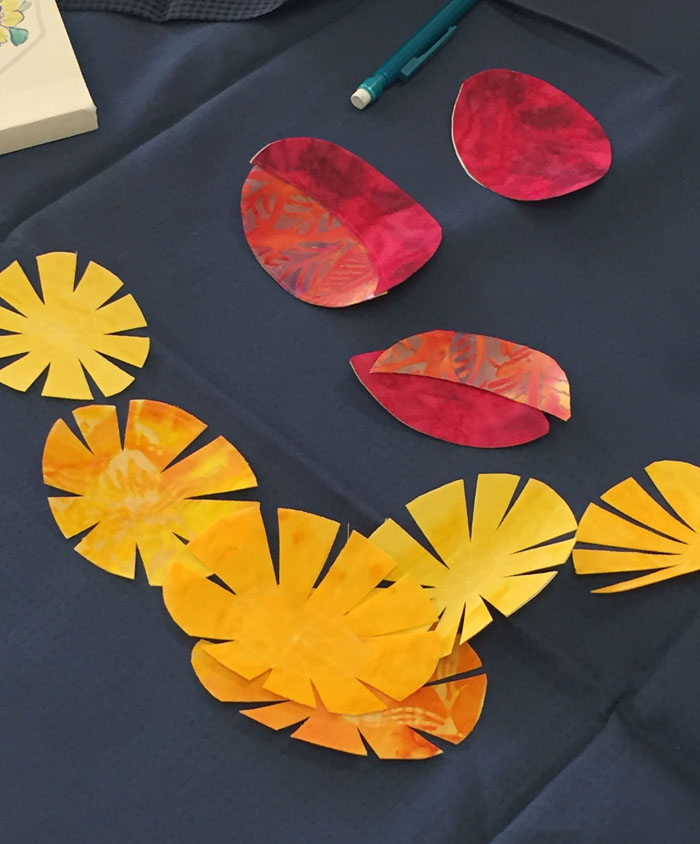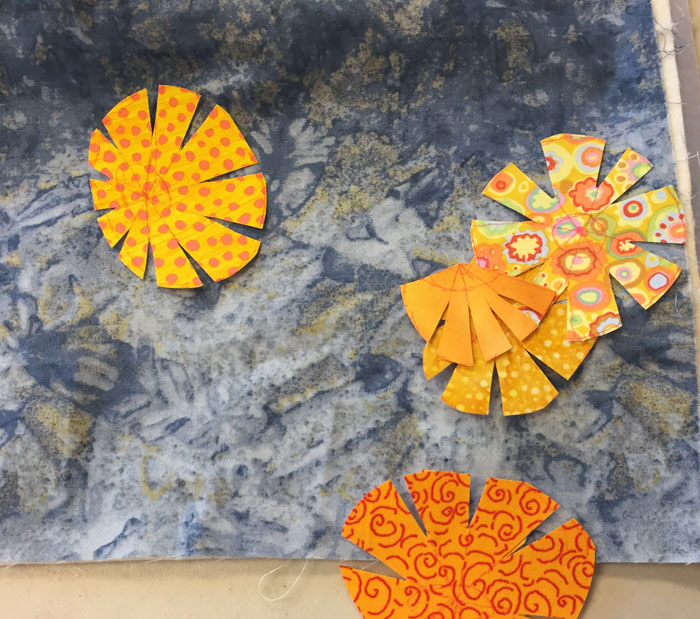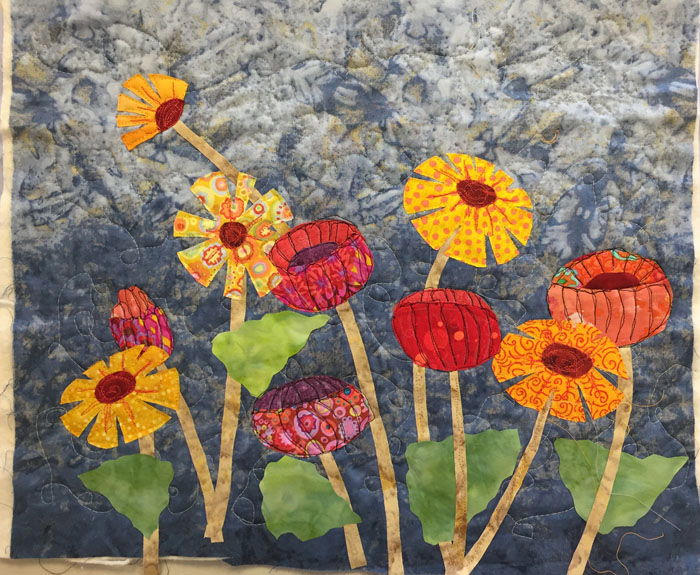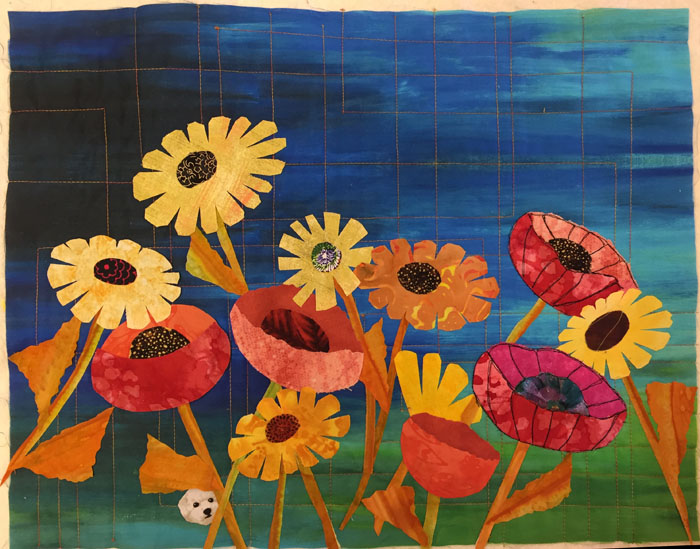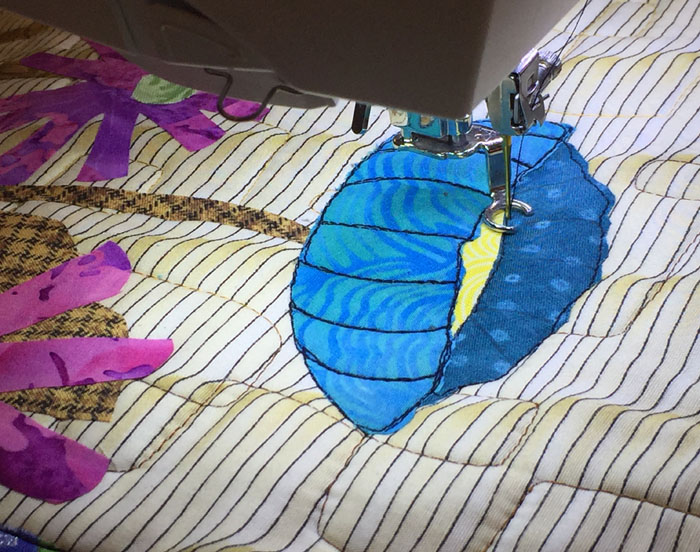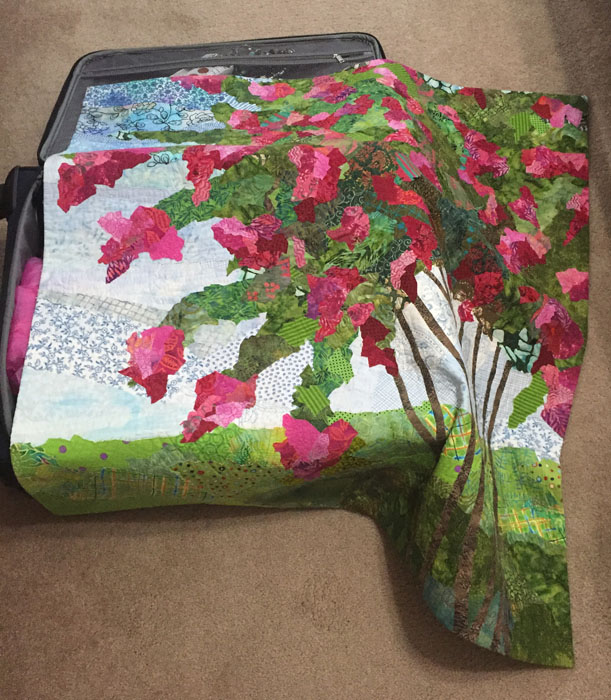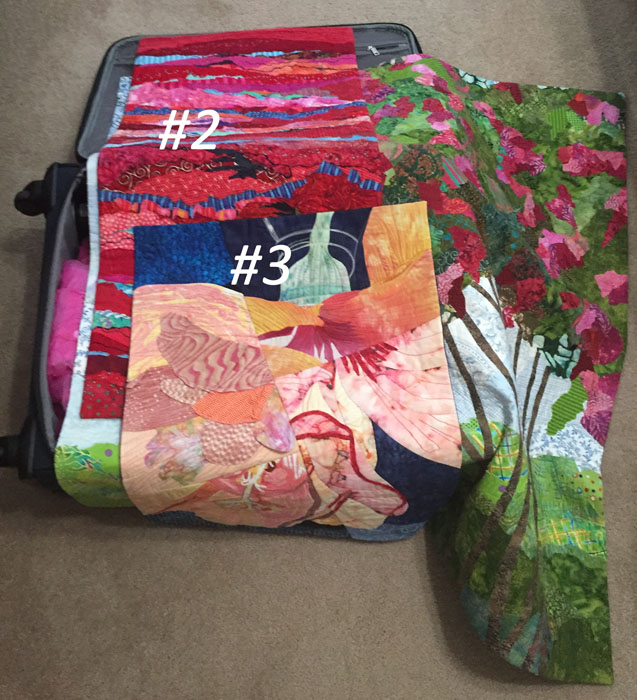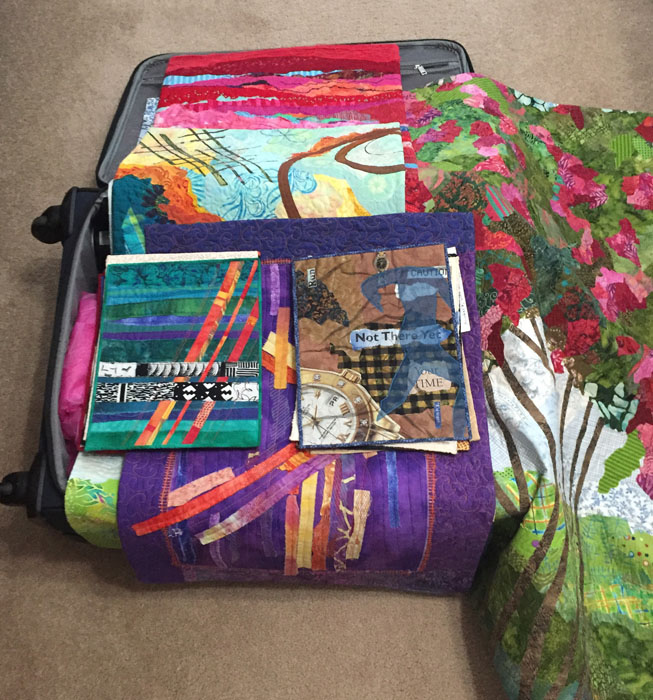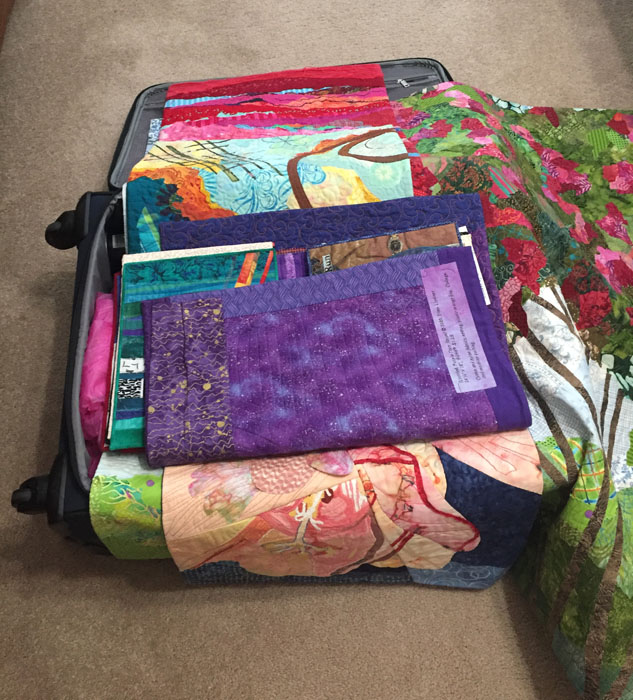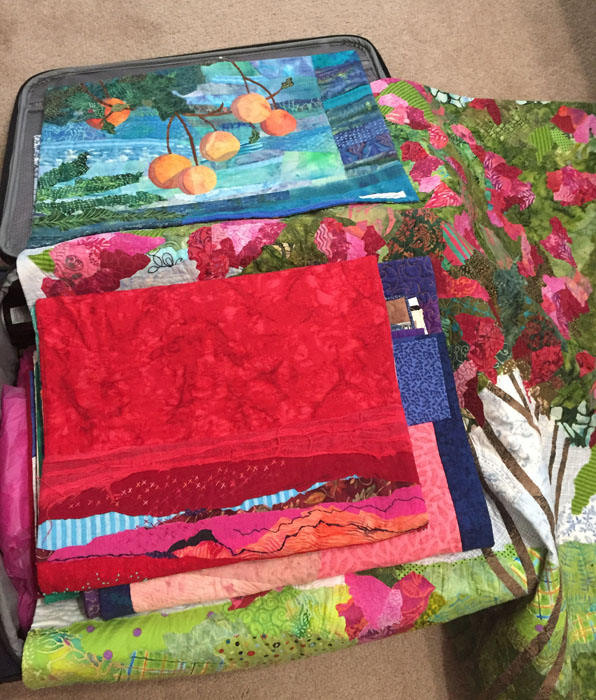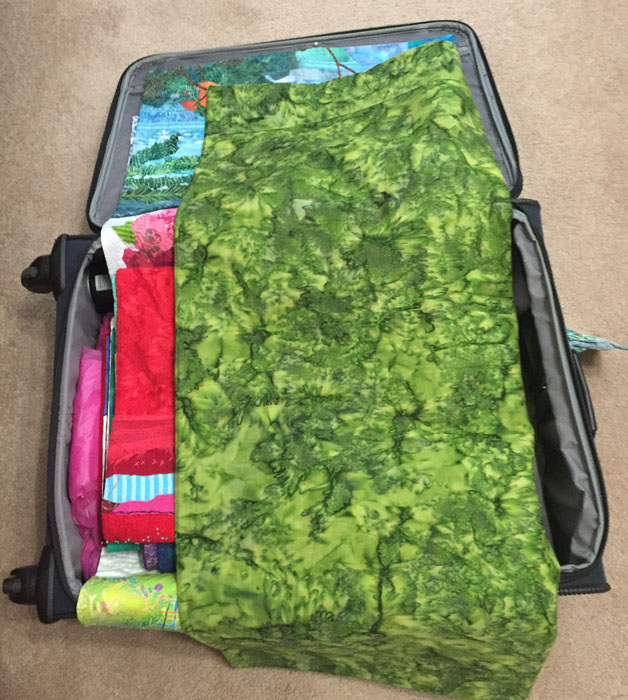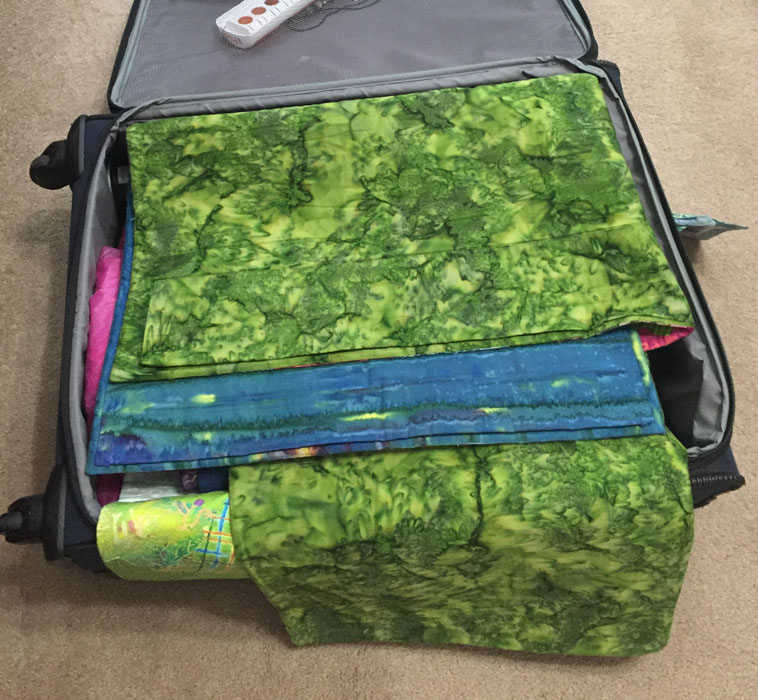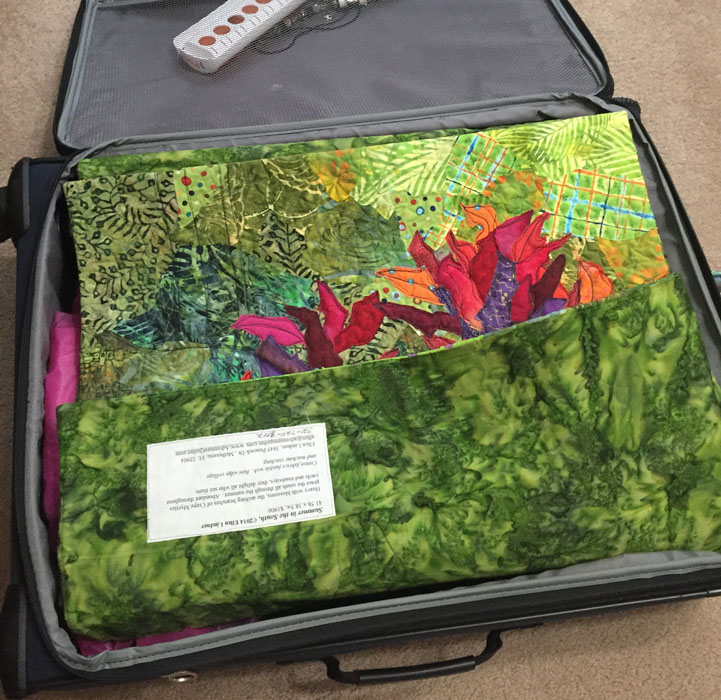At any good quilt show you’ll find amazing workmanship and creativity. The Daytona Beach show was no exception. This amazing trapunto quilt was made by Jan Hutchison.
Click any image for a larger view
(It looks slightly green under the lights, but was really a taupe color.)

Check out these fabulous details!
This next “quilt” was sort of mesmerizing. The very light layers moved around as people walked by or the air conditioning came on, making it hard to look away.
I’ll bet you can’t guess what it inspired it: a glass of a pale yellow wine. I think it must be a very light and subtle wine.
This piece was part of a small exhibit about foods, created by a South American husband and wife. (I hate that I didn’t record their names!)
Each piece was very creative and very different from one another. What surprised me was that they depicted things like texture, smell, and taste, but nothing about appearance. Talk about subtle!
My friend, Laura Ruiz, has quite a few unique tricks up her own sleeves. For several years she’s been painting onto silk before stitching it. But, recently, she learned to paint on paper, as well. She painted this cardinal and then loved it so much she had printed, much larger, through an online company.
Next, she pieced the “9 patches” around the edges and joined them to the central motif. To help visually merge the two together she lightly painted triangles into the background of the bird. Brilliant! And then look at that quilting. She’s a master! This quilt has won quite a few prestigious awards.
Finally, here’s a look at Andrea Brokenshire’s work. She also paints onto whole cloth and then adds lots of thread painting.
A beautiful piece, and a very nice show.
Ellen Lindner



